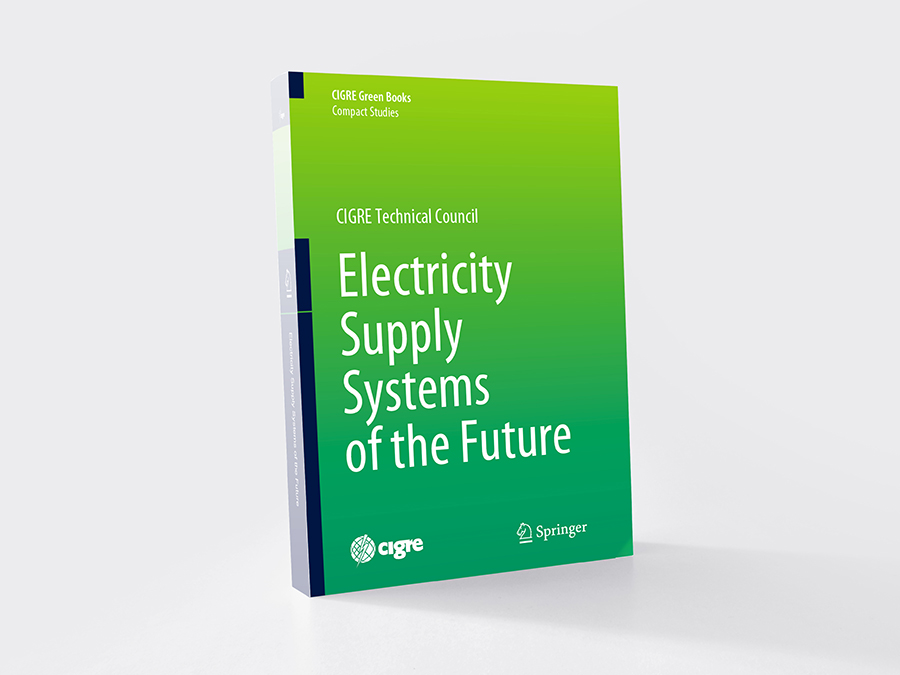Journey of a CIGRE Green Book: "Electricity supply systems of the future"
The “Electricity Supply Systems of the Future” has been published in the CIGRE Green Book series in August 2020. This inspiring book is the major milestone of a 12-year exciting journey formulating CIGRE’s vision about the future of electricity supply systems.

By Nikos Hatziargyriou,
Convener of AG “Electricity Supply Systems of the Future”
Initially the CIGRE strategic document was conceived in Milan in a meeting in 2008 chaired by Angelo Invernizzi, first Study Committee (SC) C6 Chair. This was followed by a decision at the 2009 TC meeting in Christchurch “to provide a methodology and a road map on how CIGRE will answer the questions raised under the topic (network of the future), in near and middle future, based on possible scenarios.”
In 2008, the evolution in the power systems was widely discussed, and the need for CIGRE’s independent and critical analysis of different solutions was strongly felt. CIGRE provides high quality, unbiased publications and other contributions to the electrical supply industry adding value by:
- expressing its view on the different conditions/solutions in different regions of the world,
- identifying new issues and challenges to be investigated,
- providing information about the development of new techniques, indicating the challenges for new development or for new applications of existing techniques,
- supporting and or collaborating with associations like IEC, CENELEC, IEEE, etc. for the development of new technical standards.
An expanded group, an Advisory Group (AG) plus Chairs of SC B4, B5, C1, C6, D2, was charged with the preparation of the relevant road map. The AG was initially named “Networks of the Future” and later “Electricity Systems of the Future”. Its composition comprised the SC Chairs of A2, B2, B4, B5, C1, C2, C3, C4, D2 and it was convened by the C6 Chair.
Several meetings and debates among many in the Technical Council (TC) were held to define the challenges and diretions of future electricity systems. The results were published in the TC white paper in ELECTRA, N° 256 - June 2011, pp. 42-49. The main value of this report was the identification of 10 key technical issues (challenges) characterizing the evolution of future energy systems:
- TI1. Active Distribution Networks resulting in bidirectional flows within distribution level and to the upstream network
- TI2. The application of advanced metering and resulting massive need for exchange of information
- TI3. The growth in the application of HVDC and power electronics at all voltage levels and its impact on power quality, system control, and system security, and standardisation
- TI4. The need for the development and massive installation of energy storage systems, and the impact this can have on the power system development and operation
- TI5. New concepts for system operation and control to take account of active customer interactions and different generation types
- TI6. New concepts for protection to respond to the developing grid and different characteristics of generation
- TI7. New concepts in planning to take into account increasing environmental constraints, and new technology solutions for active and reactive power flow control
- TI8. New tools for system technical performance assessment, because of new Customer, Generator and Network characteristics
- TI9. Increase of right of way capacity and use of overhead, underground and subsea infrastructure, and its consequence on the technical performance and reliability of the network
- TI10. An increasing need for keeping Stakeholders aware of the technical and commercial consequences and keeping them engaged during the development of the network of the future
These trends were presented in the keynote address of the 2014 CIGRE Paris Session and were promoted in numerous international events by the CIGRE president, TC chair, SC chairs and other CIGRE experts. A formal presentation was produced and displayed in meetings and relevant brochures were distributed in CIGRE Sessions (2016 and 2018). The “Systems of the Future” document remained “open” for constant updates in alignment with technological advancements and the needs of the power industry. New Working Group (WG) proposals had to declare their relevance to one of the technical issues or propose new ones, to refocus the report, if needed.
The Green Book of the “Electricity Supply Systems of the Future”, decided by the TC in 2017, was a huge leap in this direction. The Green Book comprises contributions from all SCs. In each chapter, the current state of the art, available technologies or methods are discussed, but the main focus is on the long-range evolution of each area. A major added value is that the book addresses impacts in a broader sense for society, education, the environment, the economy, etc.
The texts provided by CIGRE experts constitute valuable material to understand the trends and developments in each of the 16 technical domains. Iony Patriota de Siqueira, former Chair of SC B5 aided by Nikos Hatziargyriou, former Chair of SC C6, have assumed the main editorial work. The overall presentation of the book is introduced by the CIGRE President Rob Stephen and the foreword is written by the TC Chair Marcio Szechtman.
The book of the “Electricity Supply Systems of the Future” demonstrates the collective knowledge acquired in CIGRE SCs during a long journey of several years. This journey can never be over, as visions become realities or become obsolete and new challenges and developments unavoidably appear. Nevertheless, this Green Book provides CIGRE’s unique and unbiased technical views for the current and future state of electricity supply systems. It also shows the value of global collaborative work of numerous experts from industry and academia mobilized within the CIGRE community. CIGRE is the foremost authority for end-to-end power system expertise.

The Green Book is available for purchase on our partner's website Springer.
If you are a CIGRE Member, please contact us to benefit from a 40% discount on your purchase.


